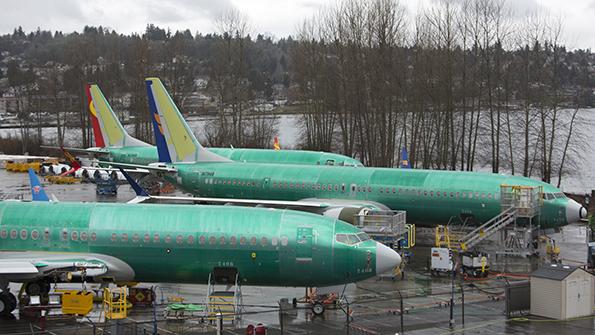
The average American or European probably has heard the words “supply chain” more in the last few months than in the entire rest of their lives, and for good reasons. Worker shortages, vaccine mandates, rising inflation and shipping delays are just some of the problems that have slowed delivery of seemingly everything from cars to consumer electronics. Well, almost everything—except for aerospace products.
It is true that during recent third-quarter earnings reports—which were mostly positive—many publicly traded aerospace and defense companies commented on supply chain issues, and some blamed them for lackluster financial results. A&D works within the larger business ecosystem and is not immune to consumer microchip shortages, cargo jams or a surge of summer vacations delayed from pandemic or worker resignations.
But are COVID-19 vaccine mandates holding back manufacturers? Boeing, Spirit AeroSystems, Raytheon Technologies and others say they are not. Vaccination rates in their workforces are increasing, and the companies have veritable phone books of furloughed and former employees to call and entice back to fill in for any current workers who will not get jabbed or offer an approved exemption.
“We laid off 5,200,” Spirit CEO and President Tom Gentile said Nov. 2 when discussing the pandemic’s effects. “We’ve recalled 1,200 of those already, but we still have at least 3,000 or so on our recall list. We’ve been in contact with them, and the vaccination rates are quite high with them. So that’s one source of employees that we can bring back.”
What about rising raw material costs or labor costs? These are not really an issue, and considering that large commercial aircraft OEMs are producing at one-third to one-half of their pre-pandemic monthly rates, while business aviation and others have not raised theirs yet, such costs are unlikely to register as a major impediment for a while. Raw material costs among larger companies are governed by long-term agreements, and very few companies buy materials on the spot market.
As industry guru Richard Aboulafia of the Teal Group notes, maybe this is the silver lining for aerospace’s predicament, considering a full recovery is still seen as years away. In his 34-year career, commercial aviation always led the economy out of recessions. But this time it could be last.
“It means we really haven’t experienced those kinds of shortages,” he says. “It might suddenly get better, or it might be something we have to live with even when the jetliner market comes back, and that’s going to be tricky. But the people who are experiencing the worst problems are the ones with monstrous [production] rates—cars or home electronics. We might be too much of a boutique production industry relative to the big numbers to have their levels of problems.”
Boeing leaders in their Oct. 27 results teleconference said costs for raw materials, labor and shipping were rising—not because of aerospace demand per se but because of the general economy’s revival. A workforce crunch is a concern—but in the future.
Still, Boeing CEO and President David Calhoun remains confident about going to a monthly production rate of 31 new 737s precisely because it is a restrained ramp-up and what Boeing thinks suppliers can handle.
“With respect to increasing from 31, as we go through the second half of the year and forward, I think that will be an assessment of the supply chain, not an assessment of demand that gets us to whatever number we get to,” Calhoun says. “I think we’re going to be in a supply-constrained world, probably from [the] second half through all of ’23 with respect to narrowbodies. And that’s true, I believe, for the industry.”
And therein lies the rub. The big, scary supply chain issue haunting the aerospace industry is actually the fragility of lower-tier suppliers whose fate depends on a robust commercial aerospace recovery. The good news was that the pandemic itself wiped out only a couple of midtier suppliers via bankruptcies. Why not more? Government aid, layoffs and furloughs, drawn down inventory, working capital, greatly increased debt and so forth—in other words, executives pulled all of the levers they could.
“We got through it—hooray! But if the market doesn’t come back in line with my expectations, these Tier 2-3s are going to be in very serious trouble, because it’s a very brittle network, even Tier 2,” Aboulafia says.
Other veterans agree. “In 2022, there will be, unfortunately, financial restructuring. I believe we’re going to see more Chapter 7 and 11,” says Alex Krutz of Patriot Industrial Partners. “But you may not see as much of that in Tier 3-4, as [there will be] quiet closures and some of those smaller businesses closing their doors.”
Companies below $10 million annual revenue could be stressed, but those with $15-18 million—if well-run—could survive. “Probably very special processes in the Tier 4—grinding, drilling, those who are dependent on further upstream spot buy—may be further distressed,” Krutz adds.
Aboulafia sees the same. “There’s a lot of uncertainty,” he says. “They just don’t have a lot of ammunition left in their guns because of what they had to do last year.”






Comments